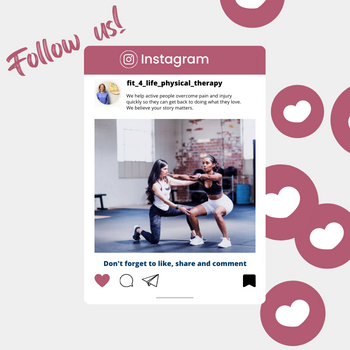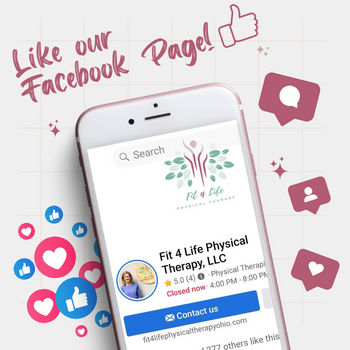We had a patient reach out recently inquiring about myofascial release. She was uncertain about what it was but had heard it could likely help her with some pain she was experiencing. The goal of today’s blog is to educate on what myofascial release is, explain its benefits, some of the different forms of myofascial release, and how we use it here at Fit 4 Life Physical Therapy.
By simple definition, myofascial release (MFR) is a specialized manual therapy technique aimed at relieving pain and restoring mobility by targeting the body’s myofascial tissues—connective tissues that surround and support muscles throughout the body.
MFR offers numerous benefits, including:
- Pain Relief: By releasing tension in the fascia, MFR can alleviate chronic pain conditions such as low back pain, fibromyalgia, and headaches
- Improved Flexibility and Range of Motion: Releasing fascial restrictions enhances the flexibility of muscles and joints, contributing to better overall mobility.
- Enhanced Circulation: The gentle stretching and pressure applied during MFR promote better blood flow, which aids in tissue health and recovery.
- Stress Reduction: The therapeutic nature of MFR can lead to relaxation and a reduction in stress levels.
There are several approaches to myofascial release:
- Direct Myofascial Release: This method involves applying firm pressure directly to the fascia to stretch and elongate the tissue, effectively releasing tightness.
- Indirect Myofascial Release: In this gentler technique, therapists apply light pressure and allow the fascia to ‘unwind’ naturally, facilitating a release without force.
- Self-Myofascial Release: Individuals can perform self-myofascial release using tools like foam rollers or massage balls to apply pressure to specific areas, aiding in the relief of muscle tightness and improving flexibility.
A common question we get is how is myofascial release different from massage? Myofascial release and traditional massage are both manual therapy techniques aimed at relieving pain and improving mobility, but they differ in focus and methodology.
Chances are, if you’ve had a massage, you left feeling completely relaxed. This is because while the focus of massage is muscle release, the art of the massage therapist is to expertly active your parasympathetic nervous system…the rest and digest part of your body. Most of us live a stressful life so this treatment is often a welcome and necessary switch off of the opposite part of your nervous system called fight or flight, aka your sympathetic nervous system. While many massage therapists use MFR, not all MFR is massage at all. In fact, the focus of MFR is releasing the fascia, which may or may not activate your parasympathetic nervous system.
A Few More Differences Between Myofascial Release and Massage
- Targeted Area: MFR focuses on releasing tension and restrictions in the fascia—the connective tissue surrounding muscles—while traditional massage primarily targets muscle relaxation.
- Technique: MFR employs gentle, sustained pressure to stretch and release the fascia, whereas traditional massage utilizes various techniques, including kneading, stroking, and tapping, to promote relaxation and improve muscle function.
Specific Types of Myofascial Release Techniques
Several specialized manual therapy techniques fall under the umbrella of myofascial release, each with unique methodologies:
- First and foremost, there are different techniques and teachers of MFR. Here at Fit 4 Life Physical Therapy, we have trained primary under John Barnes and the Barnes Method. For this, we use our hands to identify the restricted fascia, and apply specific sustained forces aimed at lengthening or releasing the restrictions. This can often feel like butter melting or taffy stretching. Additional techniques we used involve sustained pressure for release of targeted fascial restrictions, including trigger points.
- Instrument-Assisted Soft Tissue Mobilization (IASTM): This approach uses specialized tools to detect and treat fascial restrictions and scar tissue. The instruments enable clinicians to apply targeted pressure, promoting tissue remodeling and pain reduction.
- Graston Technique: A form of IASTM, the Graston Technique involves using stainless steel instruments to massage and scrape the skin gently. This method aids in healing soft tissue injuries like sprains, strains, and repetitive use injuries by breaking down scar tissue and promoting a healing environment.
- Dry Needling: This technique involves inserting fine needles into myofascial trigger points—tight bands within the muscle—to release tension and alleviate pain. Dry needling targets specific areas of muscle tightness. It is far more precise than some of the other forms of MFR. We use dry needling on a myriad of conditions, from our most active patients to those with arthritis.
- Cupping: This technique is an ancient form of alternative medicine where a therapist puts special cups on your skin for a few minutes to create suction. The idea is to draw blood to or away from parts of your body.
At Fit 4 Life Physical Therapy, we integrate these specialized myofascial release techniques into our comprehensive manual therapy services. Our goal is to alleviate pain, restore function, and enhance overall quality of life through personalized treatment plans.
Incorporating myofascial release into your wellness routine can lead to significant improvements in pain management, mobility, and overall health. Whether through professional therapy sessions or self-care techniques, exploring MFR can be a valuable step toward achieving optimal well-being.
If you are curious about MFR and what I may be able to do for you, we encourage you to reach out to a manual therapist near you!






